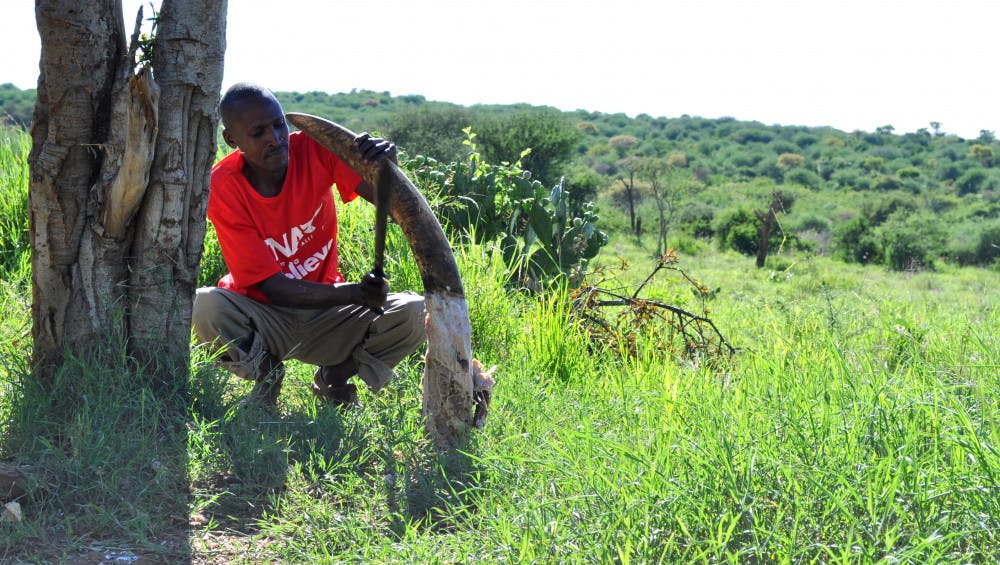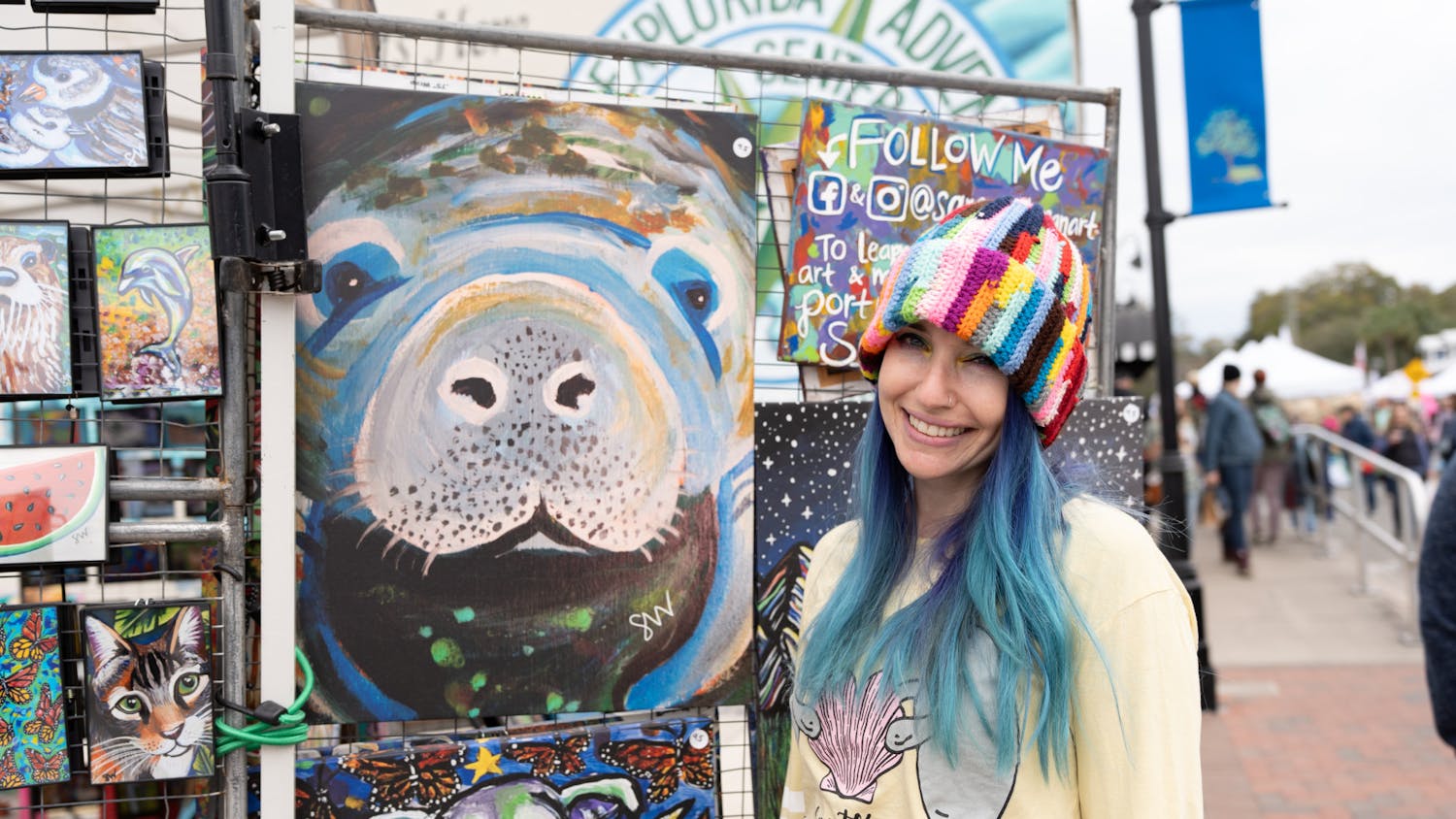The problem of poaching does not have a simple solution. Along with it comes differing definitions, complicated moral and ethical issues and the ever-conflicted battle between the growing human population and the need to conserve wildlife.
To many tourists, the appeal of visiting East Africa has roots in its exotic wildlife. Perhaps in many cultures, what we desire most is something that not many have, something we can differentiate ourselves with and perhaps become envious to others.
And with this desire comes a price.
In some cases, to save one species means to hurt another. Park rangers at Ol Pejeta Conservancy in Kenya, for instance, have been known to shoot to kill when poachers come onto the property looking to kill rhinos.
Baraka, a blind black rhino, is under 24-hour protection against poachers at Ol Pejeta Conservancy in Kenya.
The biodiversity of wildlife in the United States is comparable to that of East Africa. What many don’t realize is that to East Africans, the species that roam the mountains and savannas—such as elephants and impala—are as natural and normal to them as bears and deer to those of us who call the United States home.
If conditions continue at the current rate, it's not just the populations that suffer but the ecosystem as a whole that relies on these animals' natural processes.
Not all unfair poaching of endangered species is caused by big game hunters, but also citizens that typically live in areas far away. In Africa this act, called bushmeat hunting, occurs for a multitude of reasons, mainly stemming from culture and necessity for protein. Going out to hunt these animals means providing food for the family and often seen as an act of honor.
From the outside looking in, we want to conserve an area, but at the same time where is the line drawn to tell others what they should and should not do.
It’s difficult to feel as though our species here at home are “sexy” animals worth protecting, like the exotic ones overseas. The following compares American and East African poached animals to showcase the widespread problem of poaching in the world.
Bears & Elephants
American Black Bears (Ursus americanus)
Range:
IUCN status: Least Concern
Number left: 300,000 in the U.S.; 600,000 in North America
Facts:
-
Gall bladders can go for $3,400
-
Pelt can go for $5,000
-
28 US states have black bear hunting seasons; Florida may be next
-
18,845 killed between 1988-1992
-
Often killed because bears go where food is readily available (i.e., Dumpsters)
-Efforts made: connecting bear habitats, education, public resources such as bear-resistant dumpsters (often killed because bears go where there is readily available food sources)
African Elephants (Loxodonta africana)
Range:
IUCN status: Vulnerable
Number left: 35,000 in Kenya; around 500,000 in Africa
Facts:
-
100,000 elephants were killed from 2010 to 2012
-
The most common reason for poaching is ivory; a pound is worth $1,500 and an average tusk of a 60-year-old male African elephant weighs 135 pounds
-
It used to be very easy for ivory poachers in Kenya to post bail when caught
Wolves & Lions
Red Wolves (Canis rufus)
Range:
IUCN status: Endangered
Number left: 100 in North Carolina; 200 in captivity in U.S.
Facts:
-
Wolves are seen as a danger to livestock
-
Had to be reintroduced to U.S.
-
Until 2012, it was legal to hunt coyotes in North Carolina around red wolf territory, which led to some red wolf deaths
African Lions (Panthera leo)
Range:
IUCN status: Vulnerable
Number left: 2,000 in Kenya; less than 21,000 in Africa
Facts:
-
Maasai people kill lions as part of their culture and it’s viewed as a badge of honor
-
Lions are apex and keystone predators; this means they have a direct effect on maintaining the health of the environment
-
About 300 are killed every year
Sea Turtles (found both in Africa and North America)
Hawksbill Turtles (Eretmochelys imbricata)
Range:
IUCN status: Critically Endangered
Number left: around 20,000 (worldwide population numbers for sea turtles because of their range, so this is an estimate)
Facts:
-
Poached for meat, shells and eggs
-
-
Poached for medicinal and food purposes as well as for aphrodisiacs
-
-
One 20 kg turtle can provide $60 for someone in East Africa
-
Typically 1 in 1000 hatchlings survive
Deer & Impala
White-Tailed Deer (Odocoileus virginianus)
Range:
IUCN status: Least Concern
Number left: 30 million in the U.S.
Facts:
-
Hunted for meat and recreation
-
Most dangerous to humans because of car accidents
Impala (Aepyceros melampus)
Range:
IUCN status: Least Concerned
Number left: 1.5 million
Facts:
-
Killed by habitat degradation, increase of coffee farms and human encroachment
-
Also are hunted as bushmeat
-
They have been eliminated in parts of their range like Burundi but are still widespread






